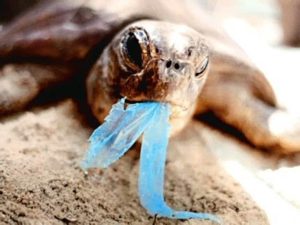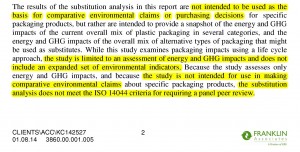
A few months back we reported a critique of a comparative life cycle study commissioned by reusable plastic crate company, IFCO, which is trying to displace its competitor product, the corrugated box, from the fresh produce market (blog July, 2013).
IFCO’s LCA was roundly criticised by our US colleagues (who are about to release their own study) basically for its incomplete life cycle inventory; its selection of a limited number of environmental indicators; and its lack of robustness (i.e. it is good practice in LCA to crosscheck findings using alternative impact assessment methods to confirm or challenge the results and conclusions). IFCO got the point, and recently announced it would be funding more LCA work to fill the gaps.
Which brings us to the recent media blitz launched by the US and Canadian plastic industries to announce the conclusions of a new study they have commissioned: that replacing current plastic packaging with “substitute materials” will only increase energy use and emissions potential. The devil is always in the details of these studies and they take considerable time to fully analyse and review (which is what we are doing).

Impact on marine life not discussed
We do note, however, that this particular study is even more limited in its approach than the IFCO study noted above: that it looks only at energy consumption and greenhouse gas emissions. You won’t find anything here about the sustainability of exploiting oil and natural gas deposits and not being able to replace them, or the impact of plastic generally on marine life.
The authors (if not the promoters) acknowledge these limitations. “The study is limited to an assessment of energy and GHG impacts (only) and does not include an expanded set of environmental indicators.” This is like being asked to buy a new car based on earnest entreaties that two of its features, say tires and brakes, out-perform all other models on the road.
The authors also acknowledge that their substitution analysis “does not meet the ISO 14044 criteria for requiring a panel peer review.” The results, they say, are “not intended to be used as the basis for comparative environmental claims or purchasing decisions.1” Maybe the authors need to have a quiet word with the funders and promoters of their study on that one.
______________________________________________________________________________

1
